Disclaimer: The author of this article has obviously not
seen every single Super Sentai show (which is his long-term goal); however, he
tried to give justice to each entry of the franchise.
Disclaimer 2:This is a re-edited version of the original article posted on MyDramaList.com. My thanks go to Super Sentai fans who pointed out the errors that needed corrections. I'm sorry for including factual inconsistencies in the first place.
Disclaimer 2:This is a re-edited version of the original article posted on MyDramaList.com. My thanks go to Super Sentai fans who pointed out the errors that needed corrections. I'm sorry for including factual inconsistencies in the first place.
It’s morphin’ time! If you recognise that phrase, then you
must have been a child or teenager living in either North America or Europe and
watching (at least intermittently) the show called… Power Rangers. As a
6-year-old kid, I was completely mesmerised by the concept of high-school
students capable of transforming into colourful warriors and fighting in giant
mechas against gruesome monsters. However, I was not aware that I had been
basically watching half of an American show (scenes with actors without the
masks) and half of a Japanese one (all the crazy awesome action stuff). It took
me 15 years to discover that what I was watching is a remixed version of Super
Sentai…
I wrote about the Tokusatsu genre in one of my previous articles,
Godzilla’s on the Loose: 65 Years of Kaiju Rampage, but this category is so
vast that no article will completely exhaust it. Nevertheless, prepare your Dino Bucklers because we are going to explore the rich franchise known as Super Sentai, a superhero metaseries which, as of April 5
this year, celebrates its 45th anniversary.
As in the case of other big franchises, it all started with
one man… Shotaro Ishinomori was an acclaimed manga artist mostly known for such
works as Cyborg 009 (1963-1981) and The Skull Man (1970; 1998-2001). The first
manga series centered on nine individuals who are abducted by the evil Black
Ghost organisation and transformed into cyborgs with superhuman powers;
however, they turn against the organisation and fight it. The second manga was
about a boy with powerful abilities who takes revenge for the death of his
parents. Ishinomori was fascinated with the concept of Henshin (meaning body
change/transformation) and this is evident in the artist’s works that were also
abundant in extremely dark themes.
Toei Company became interested in adapting The Skull Man, but demanded the removal of the grim and violent tone. Ishinomori reworked the story, and the final result became the TV show known as… Kamen Rider(!). This series about a motorcycle-riding superhero became an instant success back in 1971, and it initiated a franchise that lasts to date (the latest series Kamen Rider Zero-One premiered on September 1, 2019). Ishinomori himself said about Kamen Rider: “I tried to create a new horror story, a scary work that you could still show to children” (source).
Toei Company became interested in adapting The Skull Man, but demanded the removal of the grim and violent tone. Ishinomori reworked the story, and the final result became the TV show known as… Kamen Rider(!). This series about a motorcycle-riding superhero became an instant success back in 1971, and it initiated a franchise that lasts to date (the latest series Kamen Rider Zero-One premiered on September 1, 2019). Ishinomori himself said about Kamen Rider: “I tried to create a new horror story, a scary work that you could still show to children” (source).
With the success of Kamen Rider, Toei not only commissioned the
new instalments, but they also encouraged Ishinomori to create a new tokusatsu
show. The artist found inspiration in the aforementioned Cyborg 009 manga. With
the new show, Ishinomori went on to take the Henshin idea to the next level. A
group of ordinary people would transform into superheroes by using a certain
device while shouting a phrase and making fixed gestures. That team, Sentai
(task force or fighting squadron), was to fight various kinds of otherworldly
supervillains who wanted to conquer our home planet. In each battle, the team had to face
off against a monster of the week, almost always with the usage of a giant
mecha…
The 1970s: Humble Beginnings
Himitsu Sentai GoRanger [literally Secret Squadron
FiveRanger] premiered on the 5th of April, 1975. The 84-episode-long series
tells the story of five survivors of the destroyed branches of EAGLE, an
organisation created to combat the terrorist group known as the Black Cross
Army. They are given special suits, weapons, and vehicles with which they fight
the terrorists. The rangers would be identified by their respective colours
(red, blue, yellow, green, and pink) in Japanese (Aka Ranger, Ao Ranger, Ki
Ranger, Momo Ranger, and Mido Ranger).
The show became a massive hit, and its production was
continued until 1977. However, GoRanger was a far cry from a standard Super
Sentai show (for instance, the rangers did not have a leitmotif, let alone
robots). Nevertheless, GoRanger was retroactively incorporated by Toei into the
franchise in 1995 and labelled as the first official Super Sentai series, the
one that started it all.
Great TV ratings and profits from the merchandise encouraged
Toei to keep the fire going. Ninja Captor premiered in 1976, but Shotaro
Ishinomori was in no way involved in the making of this show. As a result,
Ninja Captor did not repeat the known tropes of GoRanger. In fact, it
consciously omitted them, simply repeating the barebones of GoRanger’s
plotline. Ultimately, Ninja Captor did not become a part of the Super Sentai
franchise. This case serves to emphasize that there are “just sentai” shows out
there with a similar tone and, separately, official Super Sentai entries.
After the success of GoRanger, Ishinomori produced J.AK.Q. Dengekitai [a.k.a Blitzkrieg Squad] in 1977, the official successor of
GoRanger. This time the team started off as a quartet with a fifth member
joining later on. The rangers also had a real leitmotif (cards) which gave them
specific names (Space Ace, Diamond Jack, Heart Queen, Clover King etc.).
Unfortunately, this was the last series produced by Ishinomori who moved on to
supervise Kamen Rider projects.
Around that period, Toei made a deal with Marvel which
allowed them to use some of the American superhero characters. In consequence,
Toei made their own Spiderman show (which was radically different from the
source material) and Battle Fever J (1979), the third Super Sentai show (with
slight influences of Captain America), hailed by the fans as the first true one,
mainly because it featured a giant robot saving the day.
The franchise stepped into a new decade with the fourth instalment
called Denshi Sentai Denjiman [Electronic Squadron Denjiman] in 1980. This one
really feels like a Super Sentai show aired nowadays. We have bloodthirsty
aliens who want to take over the Earth, a science-fiction plot revolving
around the rangers who are basically destined to protect the world, the first
transforming device (ring), the first female villain, and the first ranger
robots that are capable of transforming into one giant mecha.
This entry proved to be so popular that Toei made a sequel
series the following year, Taiyo Sentai Sun Vulcan [Solar Squadron Sun Vulcan],
which takes place in the Denjiman universe but with a new team (only three
rangers). 1982 saw the release of Dai Sentai Google-V [Great Squadron Google
Five], a series with villains residing in a Dracula-like
castle and children operating computers.
The next series Kagaku Sentai Dynaman [Scientific Squadron
Dynaman] became known among the fans for many explosions within the series (the infamous American dub-parody is a completely different story, though). Choudenshi Bioman [Super Electronic Bioman] (1984)
featured the first two female rangers on the team. This series also inspired
American producers to start the work on adapting Super Sentai into Power
Rangers. This is also the time when Super Sentai boosted up its popularity with
epic theme songs and dynamic music scores. Just hit the link and fall in love with these tunes!
The franchise hit a darker note with Dengeki Sentai Changeman [Blitzkrieg Squadron Changeman] in 1985. The series that followed next year was Choushinsei Flashman [Supernova Flashman]. This entry had some noticeable
Star Trek/Transformers references, yet it told the unconventional story (the rangers
were not raised on Earth). Hikari Sentai Maskman [Light Squadron Maskman], on
the other hand, was heavily based on martial arts and mysticism. Choujuu Sentai Liveman [Super Beast Squadron Liveman], the last series to be produced in the
Showa period, is (in my opinion) the most interesting Super Sentai show of the 1980s.
It is a school drama in which crazy students kill their friends and join an
alien army, whereas a group of good students use science in order to become
rangers.
The show that concluded the decade was action-packed Kousoku Sentai Turboranger [High-Speed Squadron Turboranger] which was the first
series to use cars/motorcycles as a leitmotif. It goes without saying that it helped Toei sell lots of RC
cars.
In 1990, Chikyu Sentai Fiveman [Earth Squadron Fiveman]
premiered (this one had strong Dune undertones). Interestingly, for the first
time ever, all rangers were siblings. Allegedly, the ratings proved to be quite
poor for this series. However, Choujin Sentai Jetman [Birdman Squadron Jetman]
(1991) supposedly gained back the audiences. Toei intended to end the franchise at this
point, but great ratings of flying rangers and high toy sales made them change
their minds.
The show that followed, Kyoryu Sentai Zyuranger [Dinosaur
Squadron Beastranger], released in 1992, is considered by many fans to be a
Super Sentai milestone. It is the series that dropped the science-fiction
convention altogether and completely went the fantasy route. Rangers were not
randomly selected people but ancient warriors, protecting our planet from the
malicious witch called Bandora. In addition, the rangers’ Guardian Beasts were
practically gods in this universe. This was also the first Super Sentai season
which served as the basis for Mighty Morphin Power Rangers.
Kyoryu Sentai Zyuranger was replaced in 1993 with Gosei Sentai Dairanger [FiveStar Squadron Dairanger] which heavily implemented
Chinese folklore and also featured a child as a member of the ranger team. In
turn, Ninja Sentai Kakuranger [Ninja Squadron HiddenRanger] was distinctly
Japanese, harking back to old chanbara/ninja flicks.
The 20th-anniversary series, Chouriki Sentai Ohranger (Super-Powered Squadron King Ranger) suffered from uneven pacing. The beginning of the show seemed very promising with a dark tone and actor Hiroshi Miyauchi (Ao Ranger from GoRanger team) returning as the mentor figure. Unfortunately, due to the Subway Sarin Incident and Kobe Earthquake in 1995, the series suffered from many rewrites. In addition, there is an urban myth repeated across many websites that Chouriki Sentai Ohranger nearly destroyed Super Sentai due to declining viewership. This is not true. Both Ohranger and its successor, Gekisou Sentai Carranger [Racing Squadron Carranger] (1996), had the same viewing figures (and high toy sales).
Ironically, Carranger was basically a self-conscious parody of the whole franchise (Rangers fighting for traffic safety!). Nevertheless, American producers had huge difficulties with adapting this wacky comedy into a serious season of Power Rangers Turbo.
Denji Sentai Megaranger [Electromagnetic Squadron Megaranger] (1997) had a leitmotif of cyberspace and digital technology. It is the first Super Sentai show in the 1990s that had visibly higher viewership ratings. Seijuu Sentai Gingaman [Starbeast Squadron Galaxyman] (1998) incorporated classical elements (pirates, horses, warriors), whereas Kyukyu Sentai GoGoFive [Rescue Squadron GoGoFive] (1999) relied on an emergency rescue motif. Both shows were the last entries to be produced in the 1990s.
The 20th-anniversary series, Chouriki Sentai Ohranger (Super-Powered Squadron King Ranger) suffered from uneven pacing. The beginning of the show seemed very promising with a dark tone and actor Hiroshi Miyauchi (Ao Ranger from GoRanger team) returning as the mentor figure. Unfortunately, due to the Subway Sarin Incident and Kobe Earthquake in 1995, the series suffered from many rewrites. In addition, there is an urban myth repeated across many websites that Chouriki Sentai Ohranger nearly destroyed Super Sentai due to declining viewership. This is not true. Both Ohranger and its successor, Gekisou Sentai Carranger [Racing Squadron Carranger] (1996), had the same viewing figures (and high toy sales).
Ironically, Carranger was basically a self-conscious parody of the whole franchise (Rangers fighting for traffic safety!). Nevertheless, American producers had huge difficulties with adapting this wacky comedy into a serious season of Power Rangers Turbo.
Denji Sentai Megaranger [Electromagnetic Squadron Megaranger] (1997) had a leitmotif of cyberspace and digital technology. It is the first Super Sentai show in the 1990s that had visibly higher viewership ratings. Seijuu Sentai Gingaman [Starbeast Squadron Galaxyman] (1998) incorporated classical elements (pirates, horses, warriors), whereas Kyukyu Sentai GoGoFive [Rescue Squadron GoGoFive] (1999) relied on an emergency rescue motif. Both shows were the last entries to be produced in the 1990s.
Super Sentai entered a new millennium with “timely” Mirai Sentai Timeranger [Future Squadron Timeranger] (2000), featuring rangers as
members of the Time Protection Agency in the 29th century who end up getting
stranded in the year 2000 after chasing prison fugitives. This series marked 25
years of Super Sentai (but the celebration commenced with the introduction of the 25th team). From this point on, many of the seasons that followed
borrowed heavily from the previous entries.
Hyakujuu Sentai Gaoranger [Hundred Beasts Squadron Roar Ranger] (2001) had very cool animal powers. Nippu Sentai Hurricaneger [Enduring Wind Squadron Hurricaneger] (2002) reused the Kakuranger ninja theme while also referencing Turboranger (both teams were high school students). Interestingly, Bakuryuu Sentai Abaranger [Blast-Dragon Squadron Rampage Ranger] (2003) also shared similarities with Zyuranger (Dinosaurs leitmotif, Evil Ranger subplot).
Tokusou Sentai Dekaranger [Special Investigation Squadron Dekaranger] (2004) is another highlight of the franchise. This series had rangers as police officers fighting aliens (Akaza Banban for life!), fast-paced action, and vibrant supporting characters. It has to be noted that this season did not feature any overarching villain. Instead, Dekaranger had a “crime-of-the-week” formula.
Hyakujuu Sentai Gaoranger [Hundred Beasts Squadron Roar Ranger] (2001) had very cool animal powers. Nippu Sentai Hurricaneger [Enduring Wind Squadron Hurricaneger] (2002) reused the Kakuranger ninja theme while also referencing Turboranger (both teams were high school students). Interestingly, Bakuryuu Sentai Abaranger [Blast-Dragon Squadron Rampage Ranger] (2003) also shared similarities with Zyuranger (Dinosaurs leitmotif, Evil Ranger subplot).
Tokusou Sentai Dekaranger [Special Investigation Squadron Dekaranger] (2004) is another highlight of the franchise. This series had rangers as police officers fighting aliens (Akaza Banban for life!), fast-paced action, and vibrant supporting characters. It has to be noted that this season did not feature any overarching villain. Instead, Dekaranger had a “crime-of-the-week” formula.
Mahou Sentai Magiranger [Magical Squadron Magiranger] went
full on with the magic theme but also retained some arrangements from
Dekaranger (team colour formation and eight regular members). The footage for the
intro was shot in New Zealand.
GoGo Sentai Boukenger [Rumbling Squadron Adventure Ranger] (2006) focused on the leitmotif of explorations and marked 30 years of the franchise. It was followed by Juken Sentai Gekiranger [Beast-Fist Squadron Fierce Spirit Ranger] (2007) which returned to blending Chinese folklore with martial arts. Engine Sentai Go-onger (2008), in turn, remade the cars/racing action of Carranger. Samurai Sentai Shinkenger [Samurai Squadron True-Sword Ranger] (2009) was the first show with Japanese convention that made a switch from ninjas to samurai.
GoGo Sentai Boukenger [Rumbling Squadron Adventure Ranger] (2006) focused on the leitmotif of explorations and marked 30 years of the franchise. It was followed by Juken Sentai Gekiranger [Beast-Fist Squadron Fierce Spirit Ranger] (2007) which returned to blending Chinese folklore with martial arts. Engine Sentai Go-onger (2008), in turn, remade the cars/racing action of Carranger. Samurai Sentai Shinkenger [Samurai Squadron True-Sword Ranger] (2009) was the first show with Japanese convention that made a switch from ninjas to samurai.
So far, the latest decade of Super Sentai commenced with
Tensou Sentai Goseiger [Heavenly Armament Squadron Guard Star Ranger] (2010). Kaizoku Sentai Gokaiger [Pirate Squadron Heroic Ranger]
(2011) was released as the 35th anniversary series and it is the first series
that united all previous 34 ranger teams into one narrative. The initial idea
was to have only selected Super Sentai teams return, but the 2011 Tohoku Earthquake inspired the writers to make an enormous, Avengers-like, timeline in
which at least one actor from each previous entry appears throughout Gokaiger’s run.
Tokumei Sentai Go-Busters [Special Operations Squadron Go-Busters] (2012) contained many references to American Power Rangers, whereas Zyuden Sentai Kyoryuger [Beast Power Squadron Dinosaur Ranger] (2013) again came back to Zyuranger’s dinosaur theme. Ressha Sentai ToQger [Train Squadron Limited Express Ranger], as it can be inferred from the title, used trains for the first time as the rangers’ leitmotif (it’s so awesome!).
Tokumei Sentai Go-Busters [Special Operations Squadron Go-Busters] (2012) contained many references to American Power Rangers, whereas Zyuden Sentai Kyoryuger [Beast Power Squadron Dinosaur Ranger] (2013) again came back to Zyuranger’s dinosaur theme. Ressha Sentai ToQger [Train Squadron Limited Express Ranger], as it can be inferred from the title, used trains for the first time as the rangers’ leitmotif (it’s so awesome!).
Shuriken Sentai Ninninger (2015) relied on the ninja concept in a light-hearted tone. Doubutsu Sentai Zyuohger [Animal
Squadron Beast King Ranger] is the official 40th series; it blended a wild
animals theme with a video game motif. Uchu Sentai Kyuranger [Space Squadron Nine
Ranger] (2017) is set in a separate universe than the other entries. Kaitou Sentai Lupinranger VS Keisatsu Sentai Patranger [Phantom Thief Squadron Lupinranger VS
Police Squadron Patranger] (2018) is the first series to follow the adventures
of two separate Sentai teams. This was also the last series of the Heisei
period.
Kishiryu Sentai Ryusoulger [Knight Dragon Squadron Ryusoulger] was the latest entry of Super Sentai until the new one: Mashin Sentai Kiramager which aired on March 8, 2020. Both shows are the first entries of the Reiwa period.
Kishiryu Sentai Ryusoulger [Knight Dragon Squadron Ryusoulger] was the latest entry of Super Sentai until the new one: Mashin Sentai Kiramager which aired on March 8, 2020. Both shows are the first entries of the Reiwa period.
In order to capitalise further on the brand, each series was
accompanied by theatrical releases as well as special episodes and crossover
features. Approximately, there are over 120 releases of such films. In terms of
theatrical films, not all of these are original productions. Many movies are
actually re-edited adaptations of the episode that aired on TV. Apart from
cinema, Super Sentai also had straight-to-DVD videos and episodes that are
frequently included in special magazines. It is a part of the wonderful Toku
Geek culture.
The special effects from the days of Eiji Tsuburaya (people playing monsters in rubber suits, the usage of miniature cities, etc.) remained largely unchanged throughout the decades. Recently, CGI is heavily implemented in the show. Additionally, the actors are not playing rangers “in costumes”. Nowadays, all ranger-centered action stuff is performed by experienced stuntmen and stuntwomen (who frequently serve on more than one season).
In 1984, an Isreali-American TV producer, Haim Saban, was flicking through channels in a hotel during his stay in Tokyo. He accidentally caught an episode of Choudenshi Bioman, and he enjoyed it very much. He said the following in an interview 30 years later: “All of a sudden, these five kids in spandex appeared, kicking monsters that came to eat all the food on Earth and I thought, ‘That sounds like an intelligent show.’ I can’t explain why, but I fell in love with it” (source).
The Power Rangers Connection
In 1984, an Isreali-American TV producer, Haim Saban, was flicking through channels in a hotel during his stay in Tokyo. He accidentally caught an episode of Choudenshi Bioman, and he enjoyed it very much. He said the following in an interview 30 years later: “All of a sudden, these five kids in spandex appeared, kicking monsters that came to eat all the food on Earth and I thought, ‘That sounds like an intelligent show.’ I can’t explain why, but I fell in love with it” (source).
Since then, Haim Saban has tried to adapt Super Sentai. Allegedly,
he obtained Toei’s permission after quoting lines from Choujin Sentai Jetman to
Toei’s CEO. In 1986, he shot a pilot episode of Bioman, but it was not
picked up by any American station. It was not until the premiere of Zyuranger
that Saban struck a production deal with Fox Kids Network. He was convinced that
Zyuranger was the perfect series for adaptation.
The final result became Mighty Morphin Power Rangers, the
show that owes its existence to Super Sentai because it depends on adapting
each new season of the Japanese predecessor. Power Ranger is often criticised
for reusing the Super Sentai footage, having cardboard characters who do not progress, and
incorporating mediocre music. Nevertheless, Power Rangers has its fair share of
fans who defend it by stating that the show has better-unsuited battles, exclusive
weapons and suits, as well as more diverse casts. In consequence, we have three
groups of viewers: those who watch only Super Sentai, those who watch only
Power Rangers, and those who enjoy the best of both worlds.
Super Sentai also has a great deal of parodies which, while
poking fun at the franchise, also pay homage to it. The most notable show of
such kind is Hikonin Sentai Akibaranger [Unofficial Squadron Akibaranger]
(2012-2013). It’s a hilarious story about otaku club member from Akihabara who
become rangers in order to protect their beloved district (and eventually the whole Super Sentai Universe) from the malevolent Malshiina (arguably, the most extravagant tokusatsu villainess) and many other foes. Their main goal is to be recognised as
the official Sentai team.
The other great show is Tokusatsu Gagaga. I already
wrote about this drama here, but I simply can’t get enough of it! It is a
wonderful story about the pursuit of personal interests, making new friends,
and discovering the true self. In addition, it is also a brilliant tribute to
Super Sentai and what it means to many fans across generations.
Trivia
- During the production Marvel-Toei production cooperation, Stan Lee himself has tried to make an American version of Super Sentai but without any success. Can you imagine Super Sentai being a part of MCU?!
- The late veteran tokusatsu actress Machiko Soga played villain parts in five Super Sentai shows (Battle Fever J, Denjiman, Sun Vulcan, Maskman and Zyuranger). Her only non-villain role was in Mahou Sentai Magiranger. She passed away in 2006. She will always remain Witch Bandora to me.
- Shotaro Ishinomori steadily worked on Kamen Rider shows in the 1980s. In the 1990s, he focused on developing manga stories. He passed away in 1998.
- In 2001, in a special 51st episode of Mirai Sentai Timeranger, the team travelled back in time and revisited all the previous Super Sentai teams. The 25th team was introduced at the end of the episode.
- When the character of Dragon Ranger died towards the end of Zyuranger’s run, children wrote thousands of letters to Toei, urging the producers to bring their favourite ranger back to life.
- Another vertern tokusatsu actor, Hiroshi Miyauchi appeared in five Super Sentai entries. He also has a cameo at the very end of Tokusatsu Gagaga.
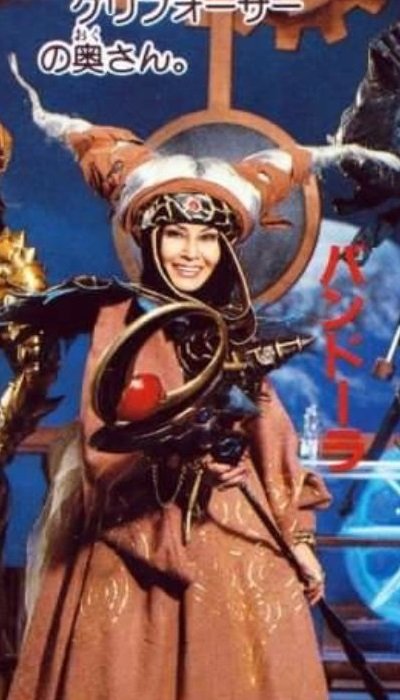
The Author’s Personal Recommendations
- Himitsu Sentai GoRanger (1975): The team that started everything. This may not be a Super Sentai that is common nowadays; nevertheless, it's worth checking out (all Super Sentai entries apart from Turboranger have fansubs).
- Kyōryū Sentai Zyuranger (1992): My first Super Sentai team, so obviously they are number 1 in my heart. In general, great story and wonderful villains. It is a shame that they had not had any video special or crossover. They need to return.
- Chouriki Sentai Ohranger (1995): Justice for Ohrangers. They are a great team. They may not develop much throughout the series, but there's plenty of action.
- Mirai Sentai Timeranger (2000): By far, my all-time favourite Super Sentai series. Wonderful time-travel concept and awesome team with amazing chemistry and dynamics. I always fondly come back to this entry.
- Tokusou Sentai Dekaranger (2004): One of the first “modern” seasons. Very enjoyable story and characters. If you can’t get into older Super Sentai shows, then it’s best to give Dekaranger a try.
- Honourable mention: Hikonin Sentai Akibaranger (2012-2013): If only they were the official team! I love them so much! The show is obviously a comedy poking fun at many clichés of the franchise, but it has a wonderful Doctor Who-like concept in terms of the rangers/villains existence (meta-meta-separate dimension) and their motivations.
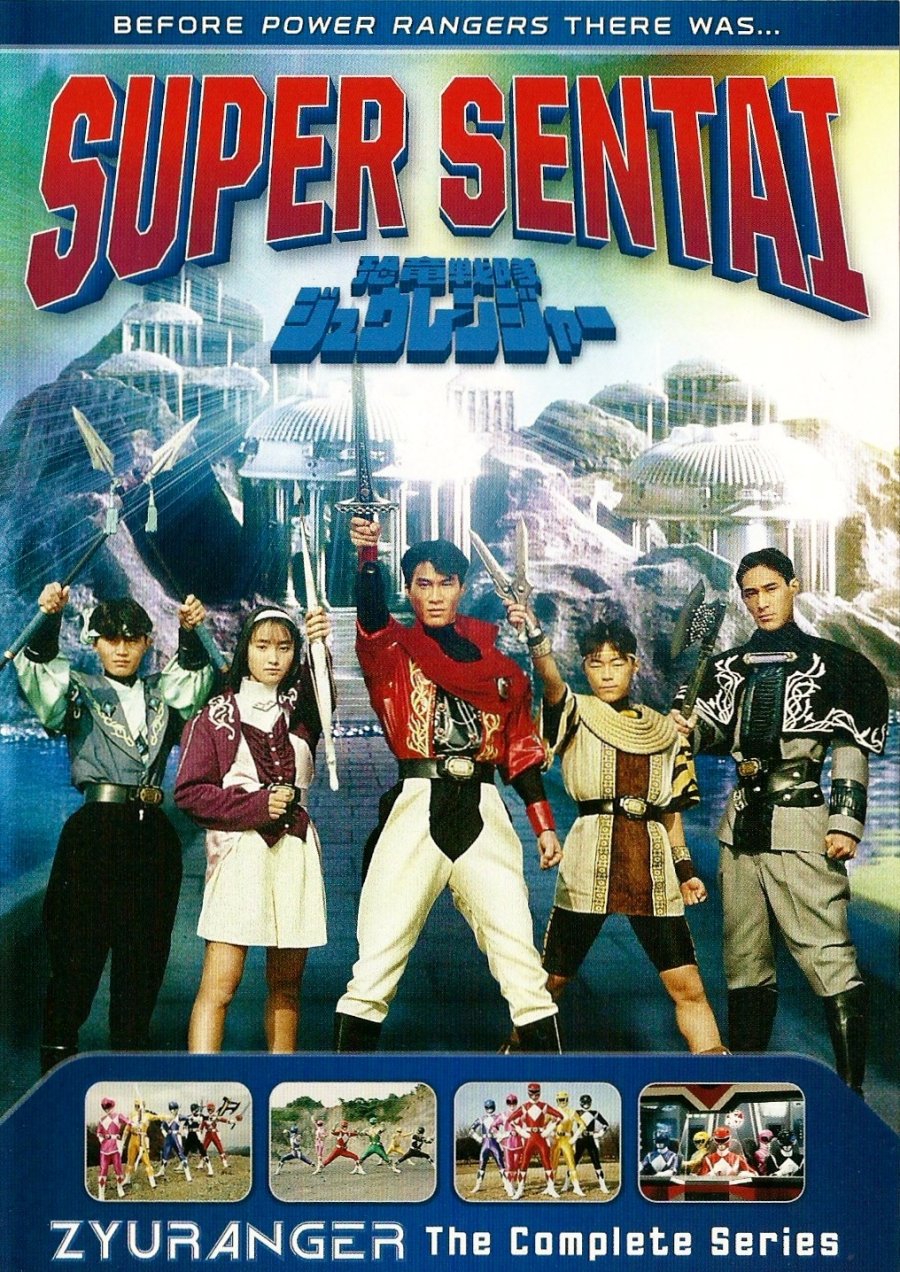
All things considered, Super Sentai continues to be a
tokusatsu tour de force that enchants both children and adults across the
globe. Toei will most certainly celebrate the 45th anniversary next year with the
introduction of a new team, but I just could not wait another year.
To conclude, Super Sentai tells the archetypal good vs. evil
story in which the heroes undergo a life-changing journey. There are enemies,
obstacles, suffering, and even death, but where there is true heart,
friendship, and love, one will always emerge triumphantly. Here’s hoping that Super
Sentai will last 100 years!
GoRanger Team: Then & Now
My thanks go to all hard-working men and women at Toei, in front of and behind the camera, who managed to provide first-class entertainment for 45 years. Thank you for creating wonderful memories.
Sources: Ranger Wiki * IT’S HENSHIN TIME! The History of Super Sentai & Power Rangers- documentary * Power Rangers - A noob’s review * Moms Learn to Love Super Sentai and Kamen Rider Thanks to Kids * Sentai’s Kiramager Revealed * Dynaman Parody Episode 1 * Amonimus’ full list of Super Sentai shows.

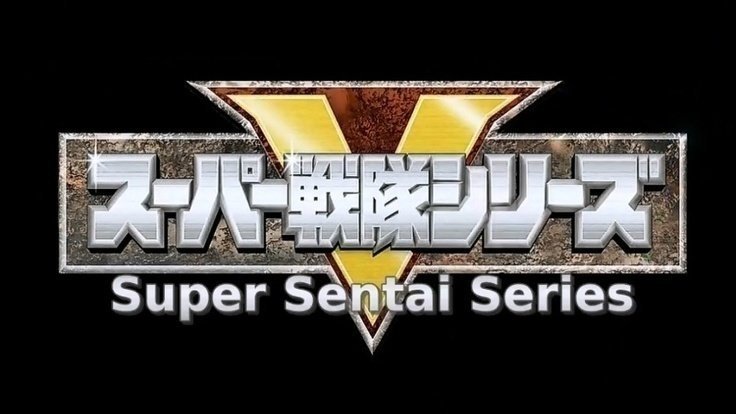

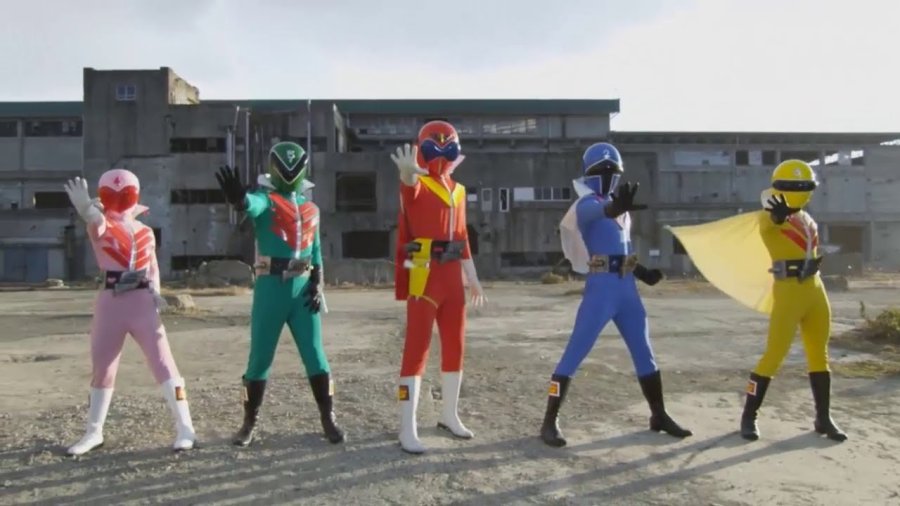

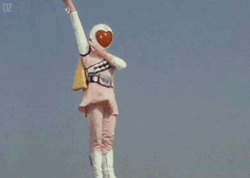
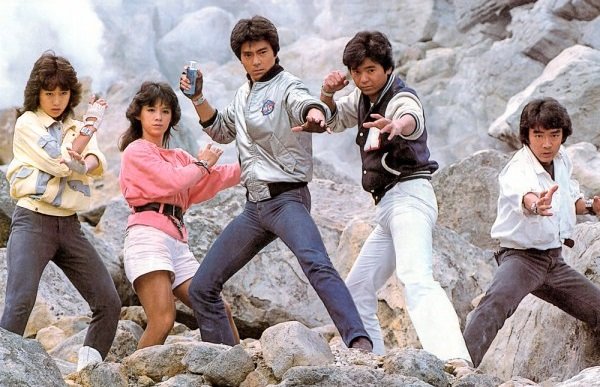
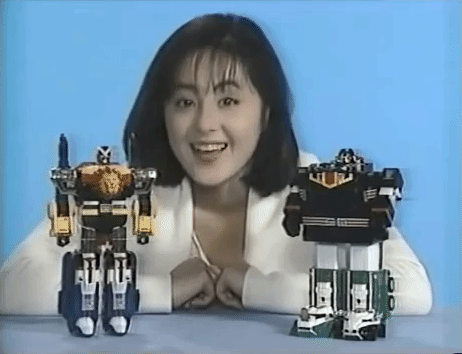
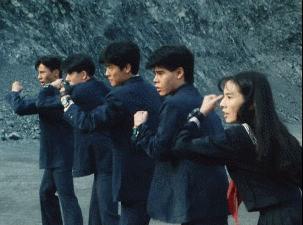
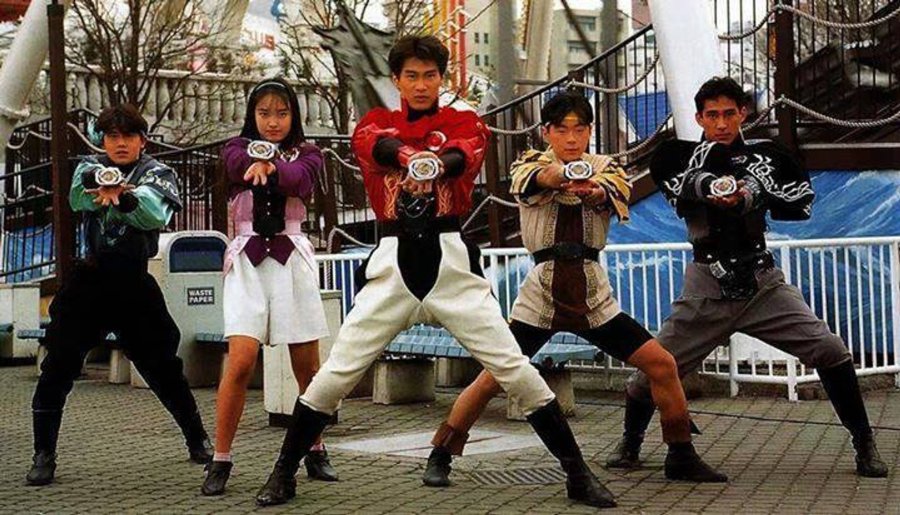


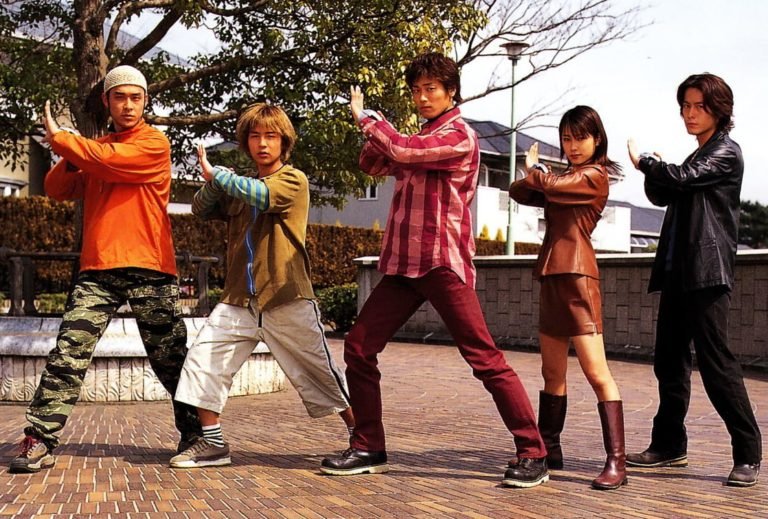
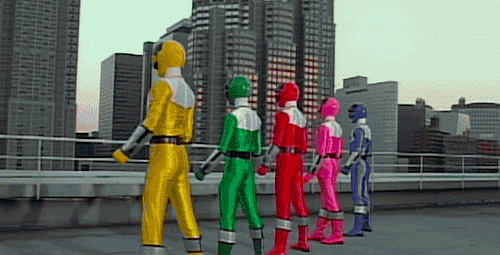
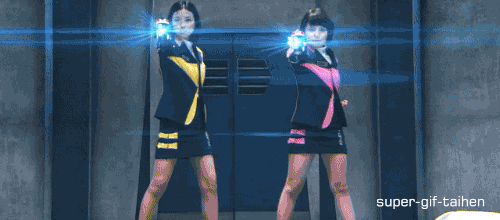
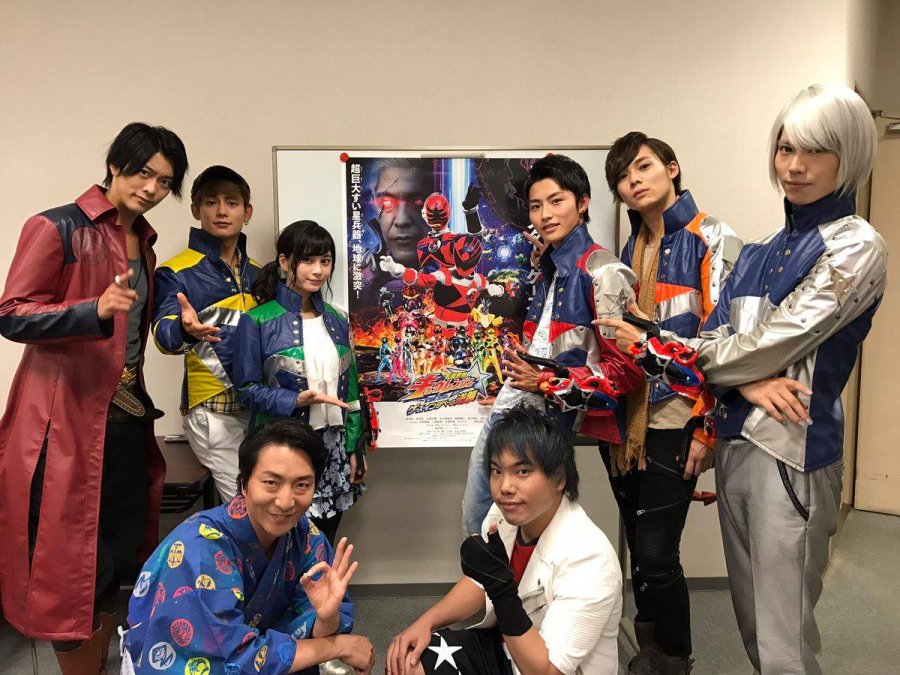
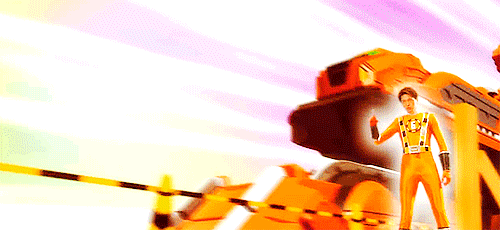


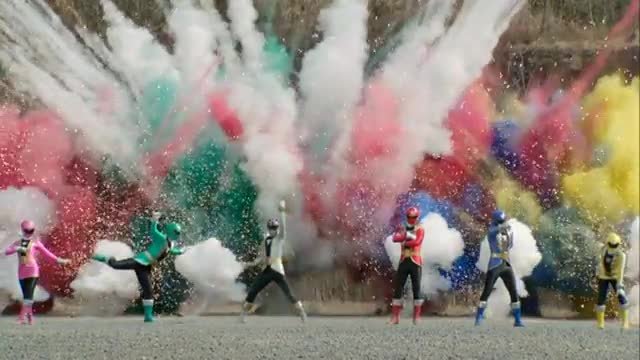

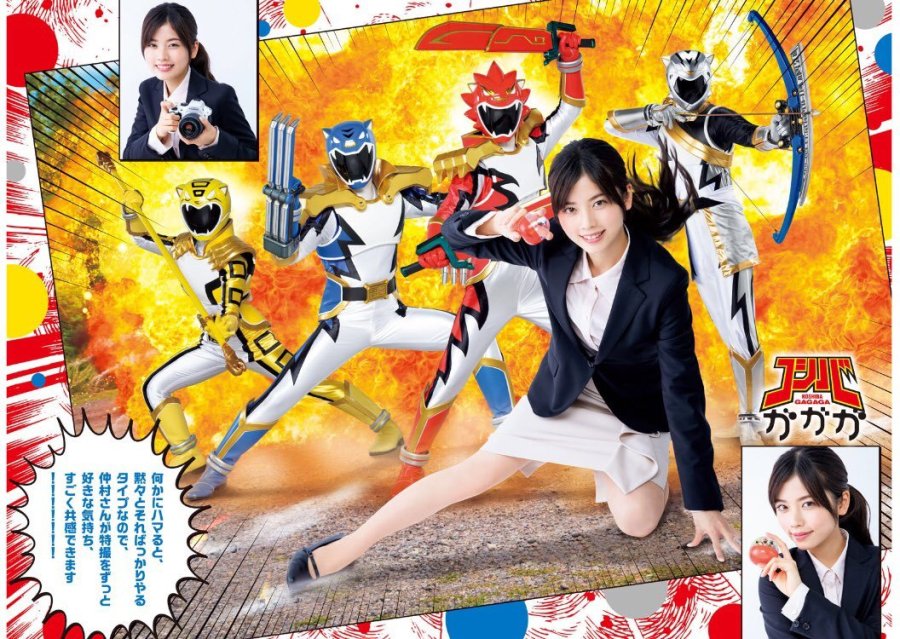

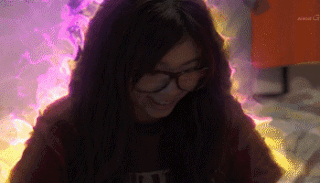

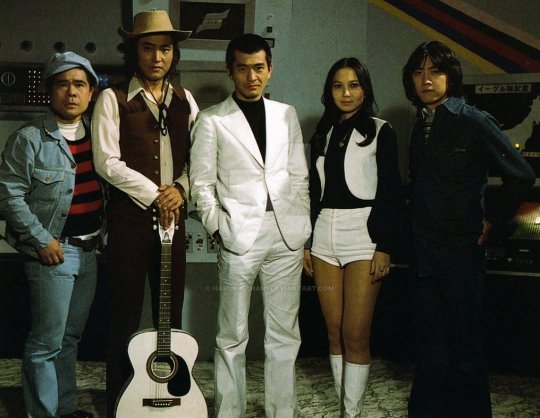
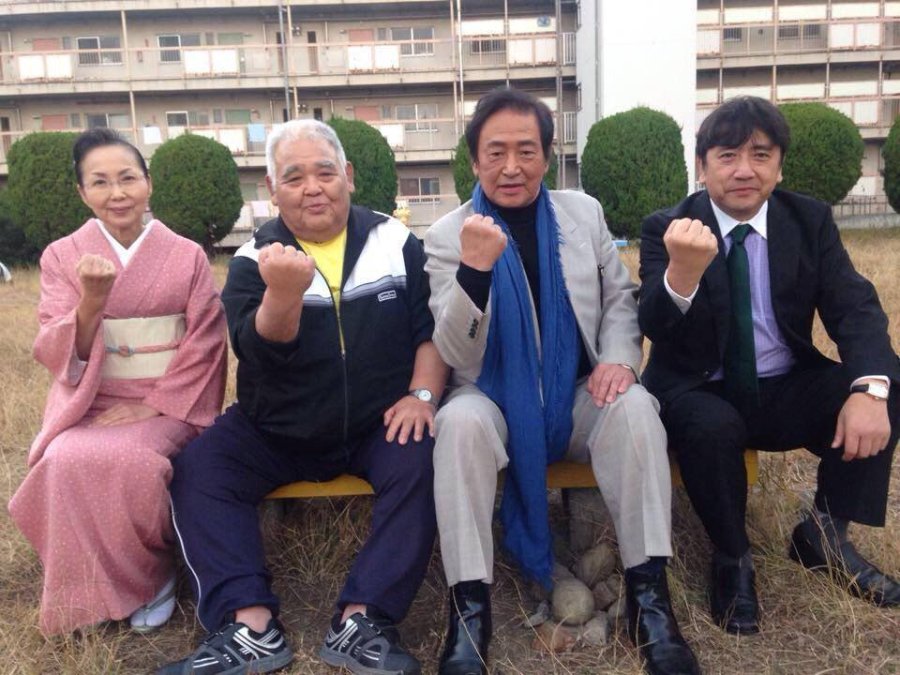
No comments:
Post a Comment
Comment moderation is switched on due to recent spam postings.